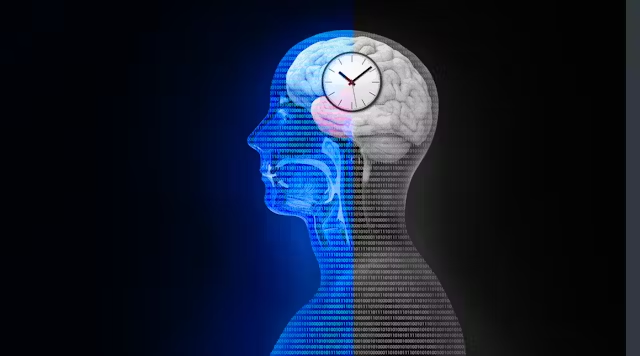
Every night, millions of people scroll on their phones under the glow of a bedside lamp, fighting against nature’s clock. But a growing wellness trend called “sleep syncing” suggests a different approach: align your sleep schedule with the sun’s cycle for better health and mood.
The idea is simple in theory – you go to bed soon after the sun sets and wake up around sunrise, syncing your body to the natural light-dark cycle. It’s a return to a more circadian rhythm-friendly lifestyle. Proponents claim it can boost your mood, improve your skin, and supercharge your productivity. So, can matching your sleep to the sun actually work? Let’s dive into what sleep syncing is all about and what experts (and everyday people) are saying about it.
Understanding Circadian Rhythms

To understand sleep syncing, we need to look at the circadian rhythm – our body’s internal 24-hour clock. It’s guided by natural light and darkness, helping us feel awake during the day and sleepy at night. The brain’s master clock (in the suprachiasmatic nucleus) responds to daylight, triggering hormones like cortisol in the morning to wake us up, and melatonin at night to help us sleep.
Modern habits – late-night screen time, shift work, and artificial lighting – can throw this rhythm off. Sleep syncing aims to realign our sleep with natural light cycles by going to bed soon after sunset and waking around sunrise. In short, it’s about using sunlight as your body’s natural timekeeper.
Potential Benefits: Mood, Skin, and Energy

Getting your sleep schedule in sync with the sun isn’t just about being a morning person – it’s about aligning with your body’s natural rhythm. From clearer skin to better moods, here are some of the top benefits people are noticing:
- Boosted Mood & Mental Health:
Morning sunlight increases serotonin, while reduced night-time light helps regulate melatonin – leading to fewer mood dips and better emotional balance.
- Clearer, Healthier Skin:
Sleeping at night supports the skin’s natural repair cycle, reduces cortisol (which can cause acne/inflammation), and may lead to fewer breakouts and a healthier glow.
- More Energy & Productivity
Syncing with your circadian rhythm improves sleep quality, deep sleep, and morning alertness – translating to better focus, memory, and all-day energy.
How People Are Implementing Sleep Syncing

Sleep syncing might sound like a wellness trend, but for many, it’s becoming a lifestyle. As people look for natural ways to improve sleep, energy, and mood, they’re experimenting with syncing their sleep-wake cycle to the sun’s rhythm. While it’s not always easy – especially with modern schedules and artificial lighting – these practical habits are helping more people ease into the process.
- Gradual Shift:
Adjust sleep and wake times slowly – about 15–30 minutes earlier every few nights—to ease your body into the new rhythm.
- Use Smart Tech:
Tools like sunrise alarm clocks, blue light filters, and auto-dimming lights can support natural sleep cues in a tech-driven world.
- Evening Wind-Down:
Create a calm, screen-free routine before bed – like reading, light stretching, or sipping herbal tea – to help your body relax.
- Morning Light Boost:
Get natural light as soon as you wake up, either through a walk outside or sitting by a sunny window, to signal it’s time to start the day.
What Experts and Real People Say

Sleep syncing might sound trendy, but it’s rooted in both ancient habits and modern science. Experts like Dr. Sabra Abbott, a circadian rhythm specialist, emphasize the importance of a consistent sleep schedule – even on weekends – to help your body release melatonin and cortisol at the right times for deeper, more efficient rest.
Dermatologists also back the practice, noting that the skin repairs itself overnight. Poor sleep can show up on your face – so prioritizing quality rest might just be the most underrated beauty hack.
And real people are loving it, too. On TikTok, users report feeling more energized and focused after syncing their sleep to sunrise and sunset. One said, “I actually wake up before my alarm now – and watching the sunrise is my new favorite part of the day.”
Of course, it’s not for everyone. Night owls and those with irregular schedules (like shift workers or parents) may struggle. But even small steps – like dimming lights at night or using blackout curtains – an help you mimic the natural rhythm and feel some of the benefits.
Finding a Balanced Approach

Sleep syncing isn’t a cure-all, but for many, it reinforces healthy sleep habits and builds a routine your body can rely on. It works best when paired with solid sleep hygiene – think cool, dark rooms and limited caffeine late in the day.
If you’re curious, start small: wake up at the same time daily and get some morning sunlight. As your body adjusts, you’ll likely feel tired earlier – go with it. Over time, this can become a natural rhythm. And if life throws off your schedule, just get back on track the next day – consistency is key.
In a world that often feels off-balance, syncing with the sun offers a simple, time-tested way to reconnect with your body and boost your well-being – one sunrise at a time.
Whether you’re battling brain fog, chasing glowing skin, or just trying to stop snoozing your alarm five times, sleep syncing might be the reset button you need. It’s not about perfection – it’s about slowly realigning with a rhythm that your body was built for.
By leaning into natural light cues, adopting consistent habits, and winding down in harmony with the sun, you might just rediscover what truly restful sleep feels like. So why not give it a try? Start small, keep it consistent, and let your body take the lead.